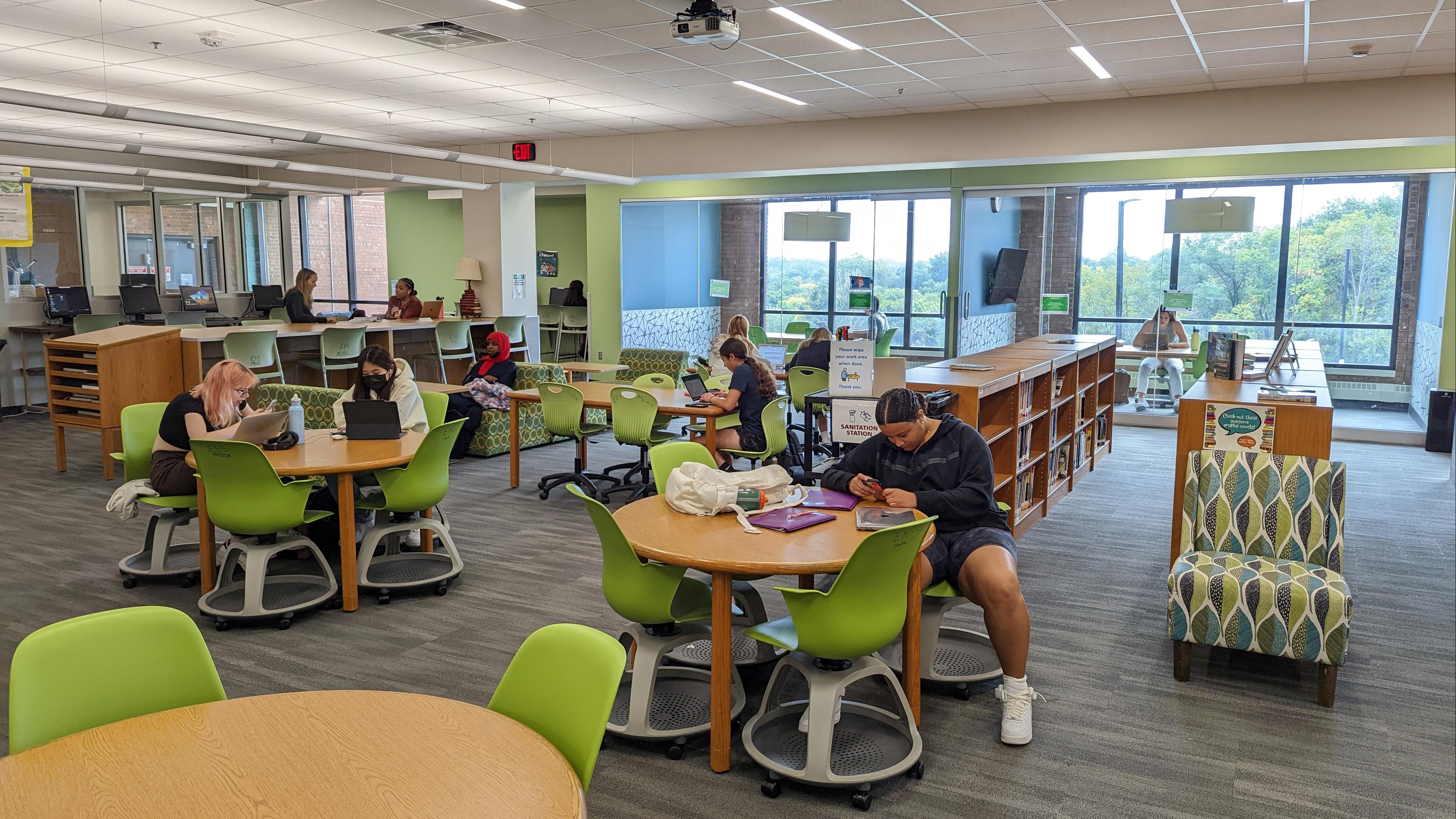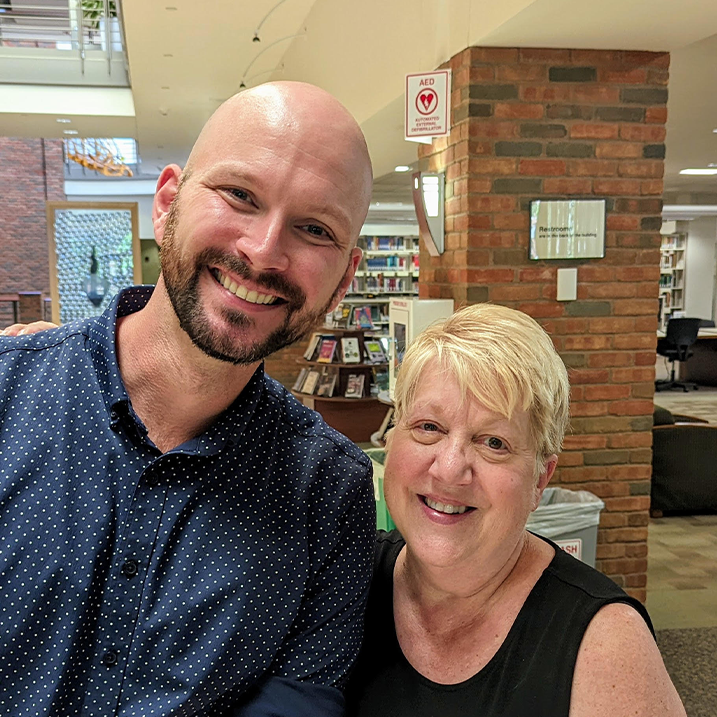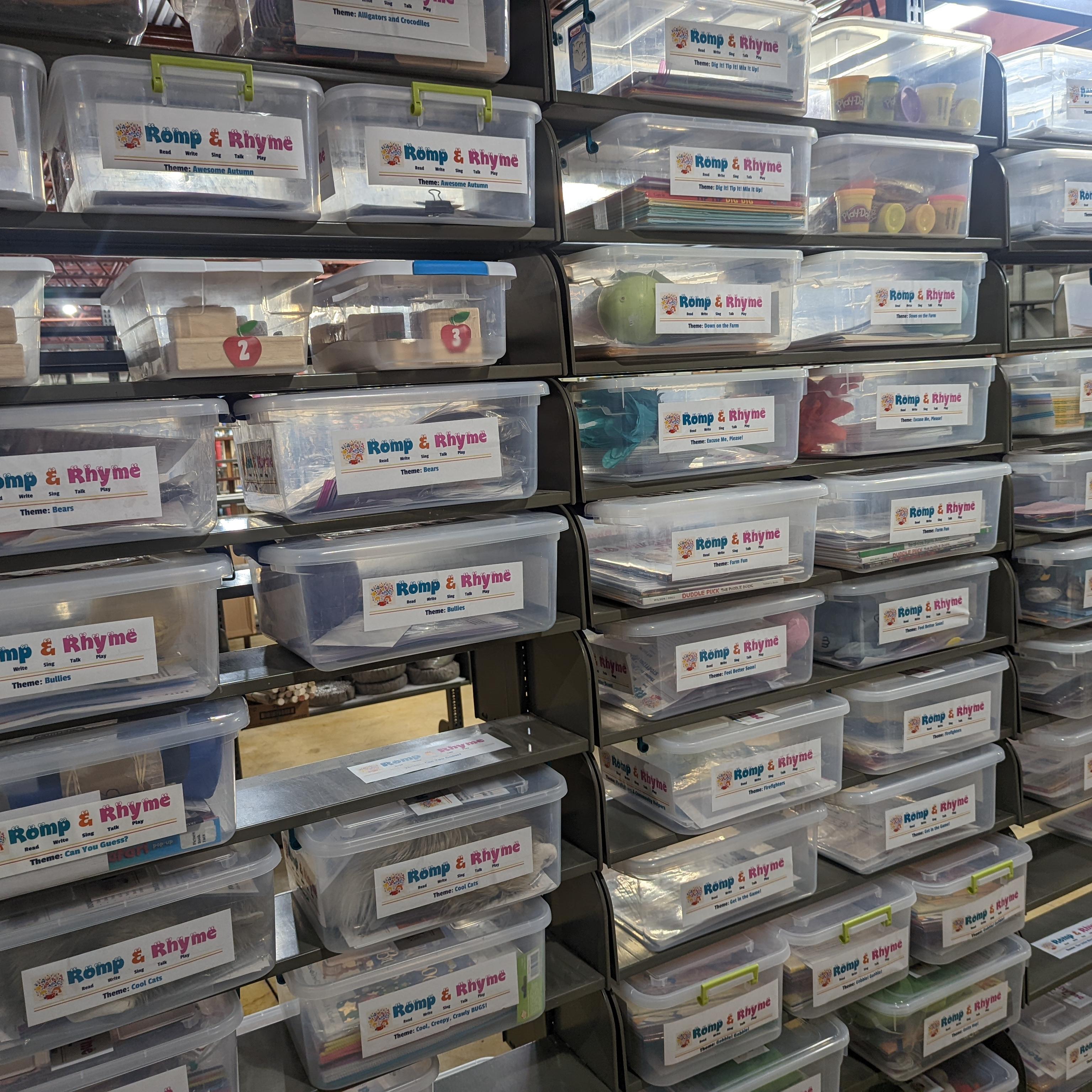by Zach Miller
Quick Summary
Thanks to the efforts of media specialist Sara Swenson and her colleagues, Edina High School students gravitate to their media center, a space that is welcoming and full of just what they need.

When you throw a party, where does everyone end up? Standing in the kitchen, of course. It’s open, it’s welcoming, and it’s full of what you need.
In much the same way, students at Edina High School gravitate to the media center. It’s certainly open and welcoming. The space is full of natural light let in by windows that span the length of the library, unimpeded by low-slung bookshelves interspersed with computer stations, work tables, and glass-walled study spaces. Over the hour I spent with Edina media specialist Sara Swenson, she never missed the opportunity to welcome an arriving student. “Kids from all walks of life come to the library to study, read, and hang out,” Swenson told me. “We provide a welcoming space for all students to support their various needs, a space where students are greeted by name with a smile.” Special Education is just down the hall, and the College & Career Center is right next door.
There are books too, of course. Despite the iPad having been around for nearly as long as even the oldest high school student, the library’s print collection (organized by genre) remains popular. QR codes linked to the online catalog are posted around the library to help readers find what they’re looking for. And EHS students do a lot of reading. Over 1,000 have participated in their Breakfast Book Club over the past 20 years, advised by Swenson and Sarah Burgess, a colleague from the English department. They’re fond of ebooks, too. Not just because they’re so portable, but also because of the privacy they afford.
Each of the nine schools in the Edina school district has a full-time librarian on staff. Swenson, who’s been at Edina High School for 24 years, acknowledges that isn’t the norm everywhere in Minnesota. “More and more schools are facing a situation where they have a library, but no librarian,” she said. “Teachers are content experts, and media specialists are there to collaborate with teachers to find resources, teach information literacy and research skills.”
Minitex offers state-funded tools to libraries of all kinds across Minnesota, including school media centers. Swenson and her colleagues make sure their students get the full benefit. EHS served as a test case for adding the statewide Ebooks Minnesota collection to their local collection, and they have an extra 9,000 ebooks in their catalog as a result. Resources from Minitex’s eLibrary Minnesota, including news archives, Encyclopedia Britannica, and research databases tailored for middle school, high school, and college students are all featured on the media center’s Research Resources website. LearningExpress Library helps students build the skills they need to get into college or start a career. Every year, Swenson visits classrooms to introduce students to LearningExpress and to help them set up the accounts they’ll need to take practice AP tests and college entrance exams, find scholarships, explore careers, or build a resume.
eLibrary Minnesota is available to every school in Minnesota, but schools can also add resources to meet local needs by working with Minitex’s Cooperative Purchasing program. Minnesota libraries saved over $4 million last year by purchasing electronic resources through Minitex. EHS offers its students CultureGrams, a “reference for concise and reliable cultural information on the countries of the world,” and SIRS Issue Researcher, “authoritative insight into the most-studied social issues [including] pros and cons from relevant, credible documents and graphics selected by trained editors and curated from over 2,000 global sources.”
Even with this many research avenues available, there are times when it seems that a book or an article is beyond reach. But that’s rarely the case. Minitex’s robust statewide interlibrary loan service is available to K-12 schools, and MEDD (Minitex Electronic Document Delivery) can locate, scan, and email articles to patrons, with an average turnaround time of less than a day. “I love that program, it's phenomenal,” says Swenson. “I tell students, don't limit yourself. We can get that!”
Sara Swenson and her colleagues have crafted a welcoming space where students benefit from local as well as state-funded resources. It’s a media center full of what students need. About all that’s missing is… a kitchen?

